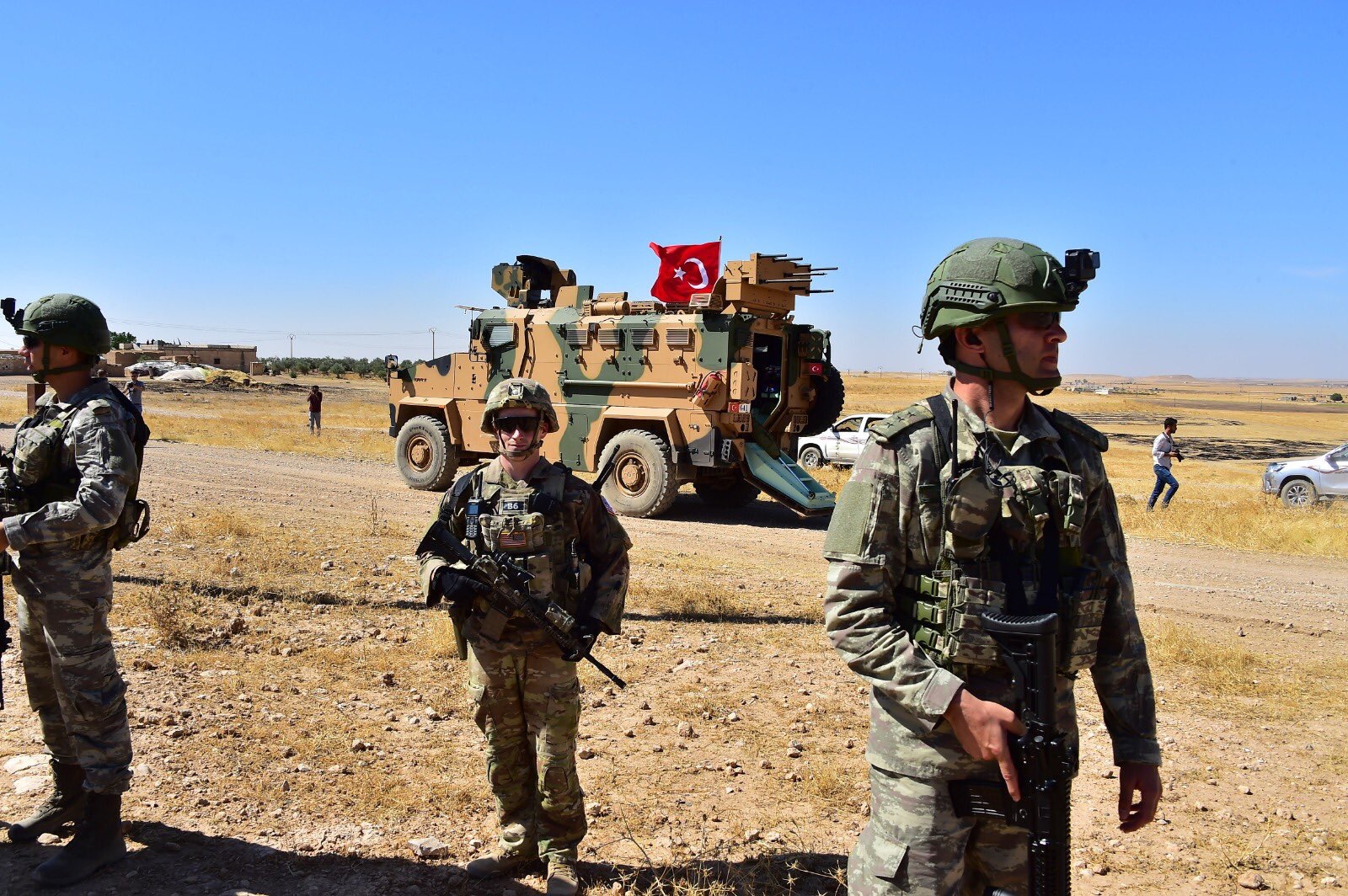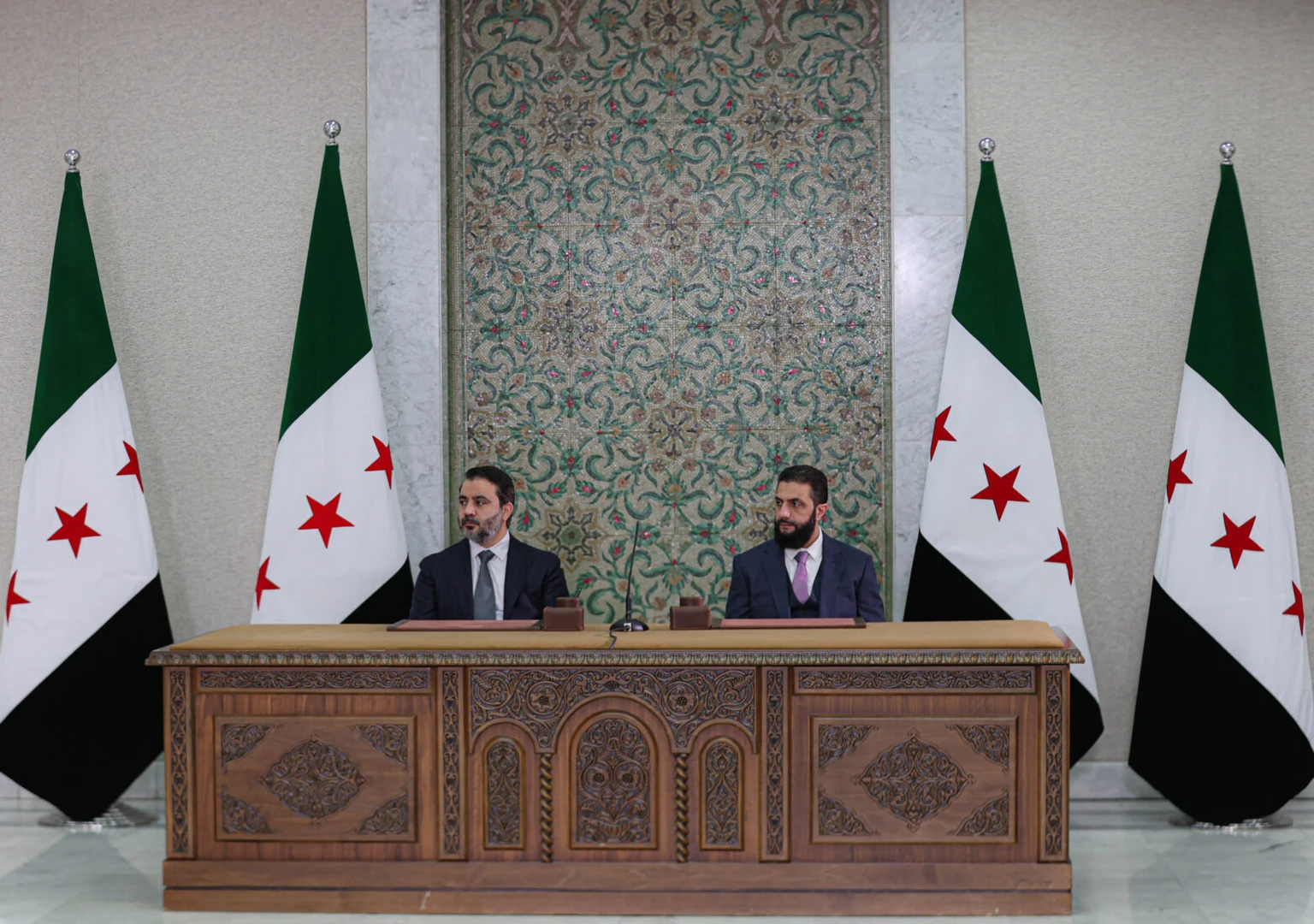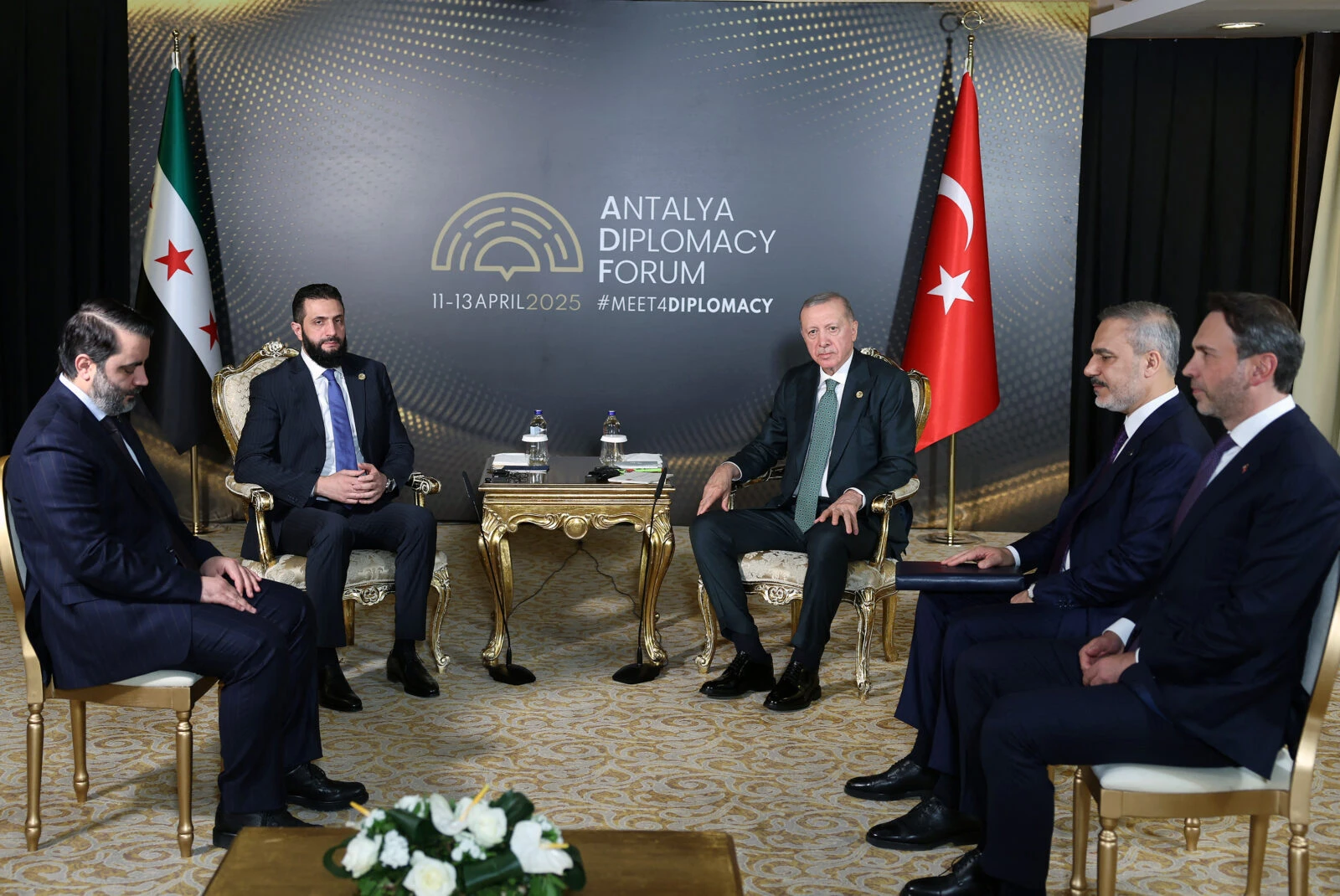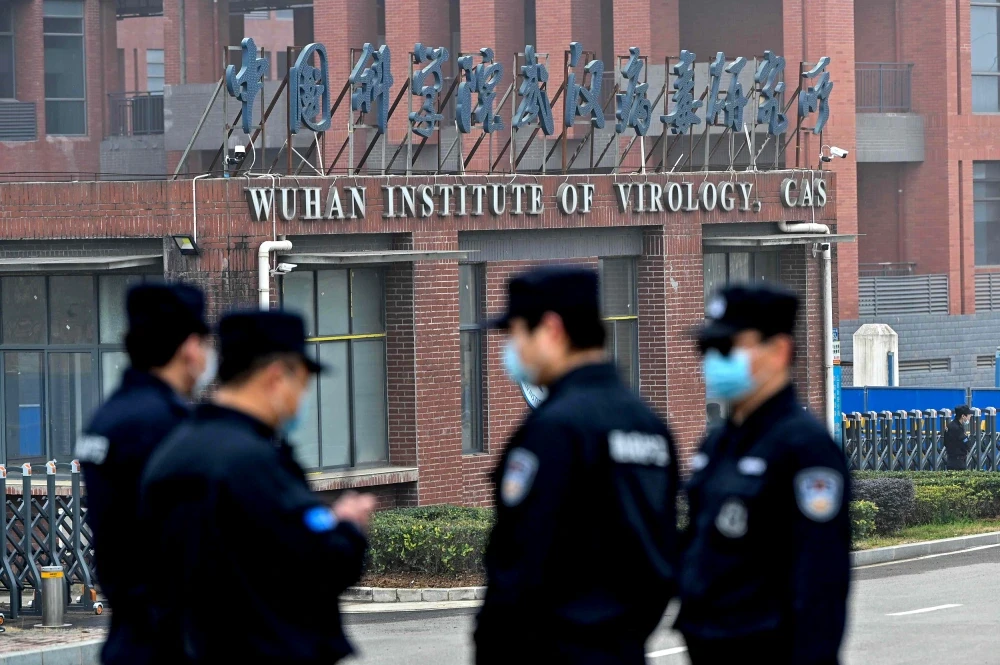Trump administration sets 8 conditions for Syria as US begins partial withdrawal
 US forces patrol in Syria's northeastern city Qamishli, in the al-Hasakah province, on Jan. 9, 2025. (AFP Photo)
US forces patrol in Syria's northeastern city Qamishli, in the al-Hasakah province, on Jan. 9, 2025. (AFP Photo)
The Trump administration is considering a significant reduction in U.S. troop presence in Syria while weighing limited sanctions relief, contingent on an eight-point list of demands reportedly presented to Damascus.
The Washington Post reports that a mid-level U.S. official delivered the list to Syria’s interim government during recent diplomatic meetings in Brussels.
The proposed conditions aim to test the intentions of Syria’s new leader, President Ahmed al-Sharaa, who ousted longtime ruler Bashar al-Assad in December. Though al-Sharaa is viewed by some allies as a potential stabilizing figure, U.S. officials remain cautious about embracing his government.
“We continue to approach Syria with a lot of caution,” a senior U.S. official told the Washington Post. “We’re looking at Iran not coming back and (the Daesh) not coming back as the crucial interest of the American people there.”
“As far as we know, the U.S. administration is trying to decide whether or not to stay in Syria,” a Turkish official said to WP.

8 demands to Damascus
According to the Washington Post, the U.S. conditions include:
- Allowing U.S. counterterrorism operations inside Syria.
- Publicly banning all Palestinian groups and political activity.
- Deporting members of those groups to ease Israeli security concerns.
- Declaring formal support for Operation Inherent Resolve.
- Removing foreign members considered terrorists by the U.S. from government positions.
- Demonstrating inclusion of Syria’s ethnic and religious minorities.
- Renouncing all ties with remnants of al-Qaida.
- Issuing a constitutional framework aligned with international norms.

Uncertainty over American military presence
While no complete troop withdrawal is planned, defense officials confirmed that steps are underway to reduce and consolidate the current U.S. deployment.
The U.S. maintains around 2,000 troops in Syria, primarily supporting the terrorist organization SDF. The New York Times, citing two senior U.S. officials, said the military is closing three of its eight small operating bases in the region and reducing troop levels from about 2,000 to roughly 1,400.
The PYD/YPG, also referred to as the SDF, is the Syrian offshoot of the PKK terrorist organization. PKK is listed as a terrorist organization by Türkiye, the U.S. and the EU. Türkiye also considers YPG as an extension of the PKK in Syria.
A defense official told the Washington Post that “stuff is already moving,” although no public announcement is expected before the ongoing Iran nuclear talks conclude.
“I think we’re going to go down to one very small place in the northeast,” a U.S. official said.
The potential vacuum left by a U.S. withdrawal is raising concern, particularly over the 9,000 Daesh detainees and 40,000 of their family members held in northeast Syrian camps managed by the YPG/SDF terrorist group.

Regional responses: Allies divided on next steps
U.S. allies in Europe and the Middle East remain split on how to engage with the Sharaa-led government. While some see an opportunity for regional stabilization, others—especially Israel—remain wary of legitimizing the new administration.
“The Americans are clear to us that, unfortunately, they don’t have a policy,” said a European diplomat involved in recent Syria discussions.
“Too much engagement too soon could create more security dilemmas,” Senator James E. Risch (R-Idaho) stated in a February hearing. “But too little would give Russia and Iran the ability to wield substantial influence again.”
“Time is of the essence here,” Risch added. “The door is ajar, but it’s going to close on us if we don’t take advantage of where we are.”

10 years in, US military presence in Syria
The U.S. military first deployed troops to Syria in 2014 as part of an international coalition to combat the Daesh terrorist group. At the height of the campaign, U.S. troop levels in Syria ranged between 2,000 and 2,500.
Those numbers have shifted over the years due to changing strategic priorities and partial withdrawals.
A Pentagon report from late 2024 indicated that approximately 2,000 American personnel remained in Syria at the time.
The U.S. presence in Syria has remained a contentious issue throughout Trump’s presidency. Previous attempts to withdraw troops were met with resistance from military leaders and lawmakers concerned about regional stability and the resurgence of extremist groups.

Trump’s early effort to exit Syria in 2019
In a significant policy move in 2019, Trump ordered a withdrawal of U.S. forces from northern Syria, triggering bipartisan criticism in Washington and prompting several senior defense officials to resign.
Despite the reduction in force, the U.S. has continued operations in eastern Syria—particularly near key oil infrastructure—and has maintained a presence at the strategic al-Tanf garrison near the Jordanian border.
The contingent includes mechanized infantry and armored units focused on counterterrorism operations and deterring adversarial activity.



